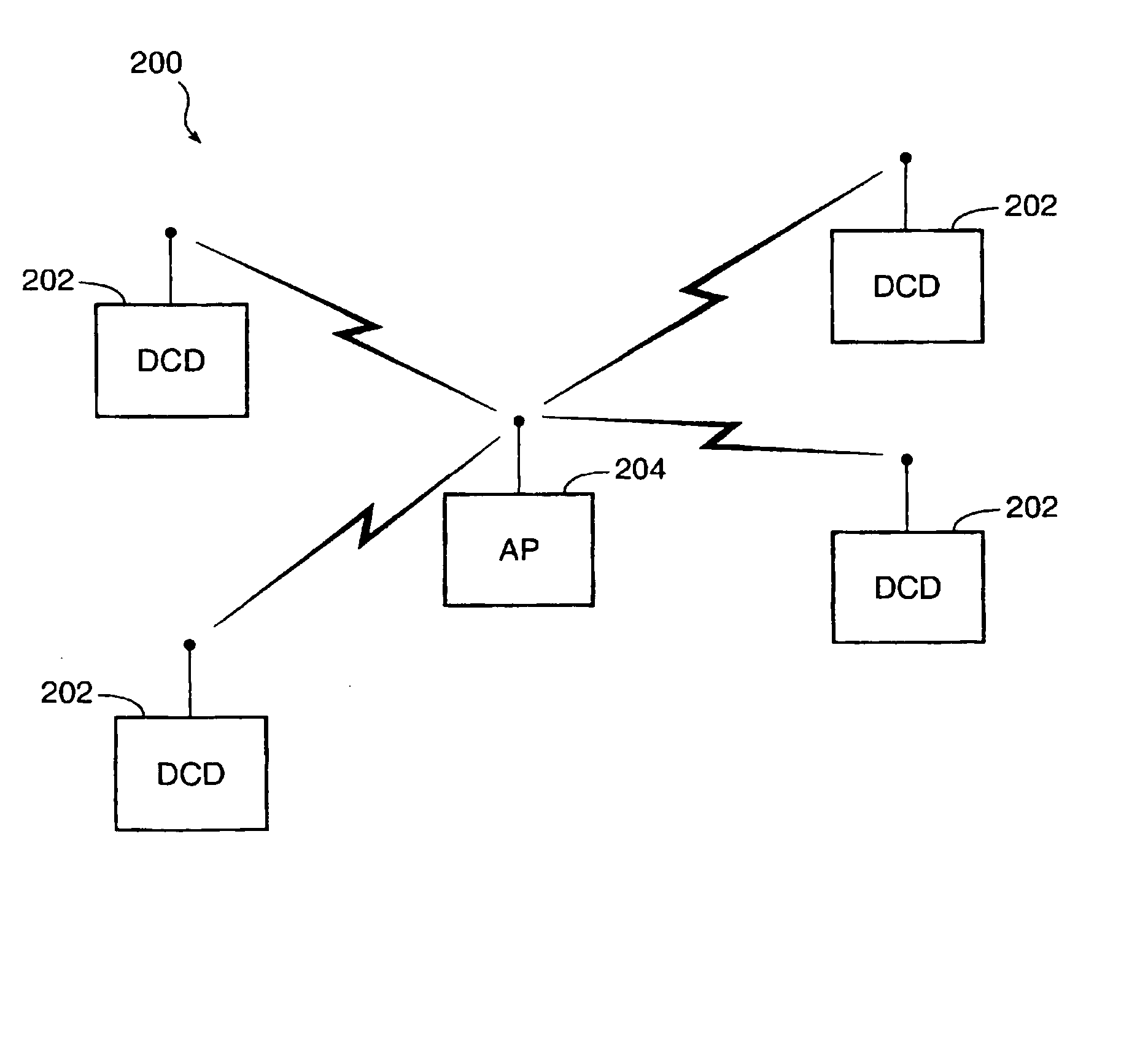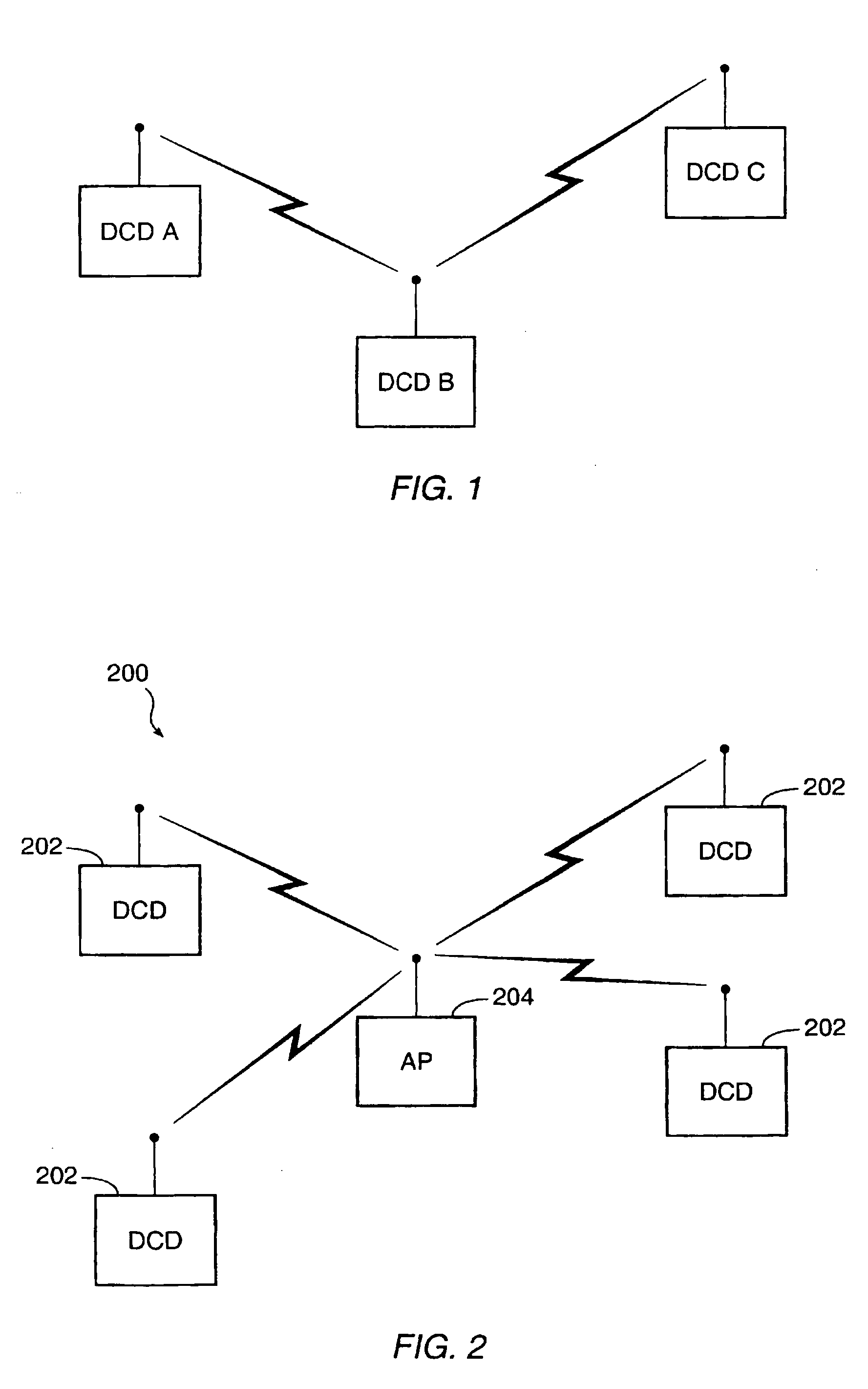Medium access control protocol for OFDM wireless networks
a wireless network and wireless network technology, applied in wireless communication, multiplex communication, wireless communication, etc., can solve the problems of poor maximum bus utilization of the mac protocol, affecting the efficiency of the network, and affecting the utilization rate of the network, so as to achieve maximum bus utilization. the effect of the medium
- Summary
- Abstract
- Description
- Claims
- Application Information
AI Technical Summary
Benefits of technology
Problems solved by technology
Method used
Image
Examples
Embodiment Construction
[0037] The explanation of the present invention will assume an exemplary wireless system. Like the system depicted in FIG. 2, the exemplary wireless system includes access point 204 and multiple data communication devices 202. Data communication devices (DCDs) 202 and access point (AP) 204 each employ a orthogonal frequency division multiplexed (OFDM), radio modem to receive and transmit over the network medium. The shared network medium, also referred to as “the bus”, is, in this case, the frequency spectrum allocated for the wireless network.
[0038]FIG. 3 depicts an OFDM communication system 300 that may be operated in accordance with one embodiment of the present invention. OFDM communication system 300 represents a combination of the transmitter side of the modem at a DCD and the receiver side of the modem at the AP, and the channel in between them. A comparable system operates on the downlink from the DCD to the AP.
[0039] A symbol mapper 302 maps dat...
PUM
 Login to View More
Login to View More Abstract
Description
Claims
Application Information
 Login to View More
Login to View More - R&D
- Intellectual Property
- Life Sciences
- Materials
- Tech Scout
- Unparalleled Data Quality
- Higher Quality Content
- 60% Fewer Hallucinations
Browse by: Latest US Patents, China's latest patents, Technical Efficacy Thesaurus, Application Domain, Technology Topic, Popular Technical Reports.
© 2025 PatSnap. All rights reserved.Legal|Privacy policy|Modern Slavery Act Transparency Statement|Sitemap|About US| Contact US: help@patsnap.com



